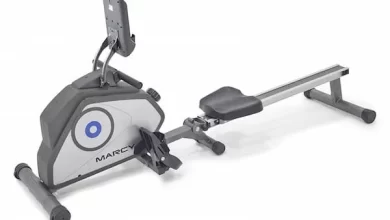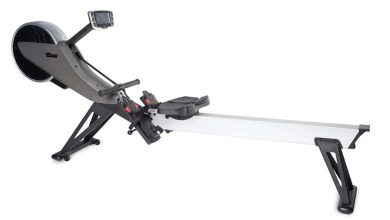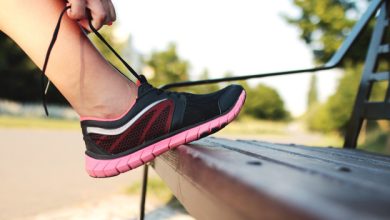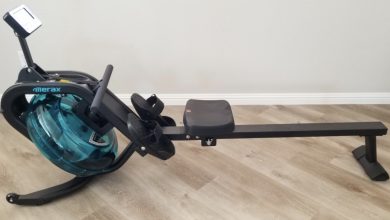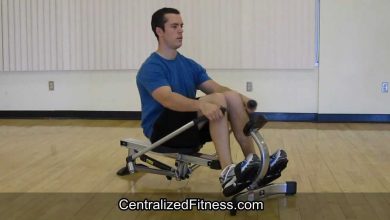Water Rower vs Air Rower – Which is for me?
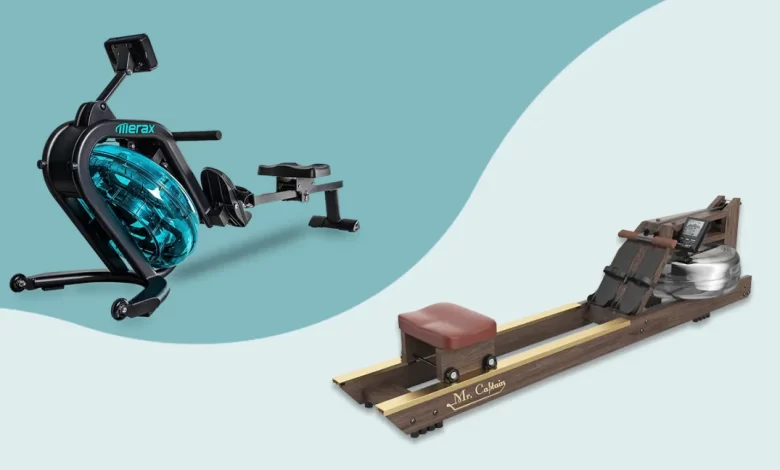
You might have heard of rowing machines and its effectiveness in getting your heart rate up to tear through body fat and help you build endurance. But you might be stuck in deciding between the water rower vs the air rower (these are the two of the top contenders when it comes to rowers).
Well, rowing machines generally are great for aerobic workouts and they work all the major muscles in the body all at once and they help keep you in shape. More so, it is a safe option for all levels of fitness and people of all ages. But there are some key differences between the two main machines- water rowers vs. air rowers.
You may notice some obvious differences in these two machines, but you may not be able to identify the key differences highlighted in this article.
Below is a comprehensive breakdown of the mode of operation of water rowers and air rowers and the basic differences between the two. You will be able to make a decision easily after reading through this article.
Water Rowers
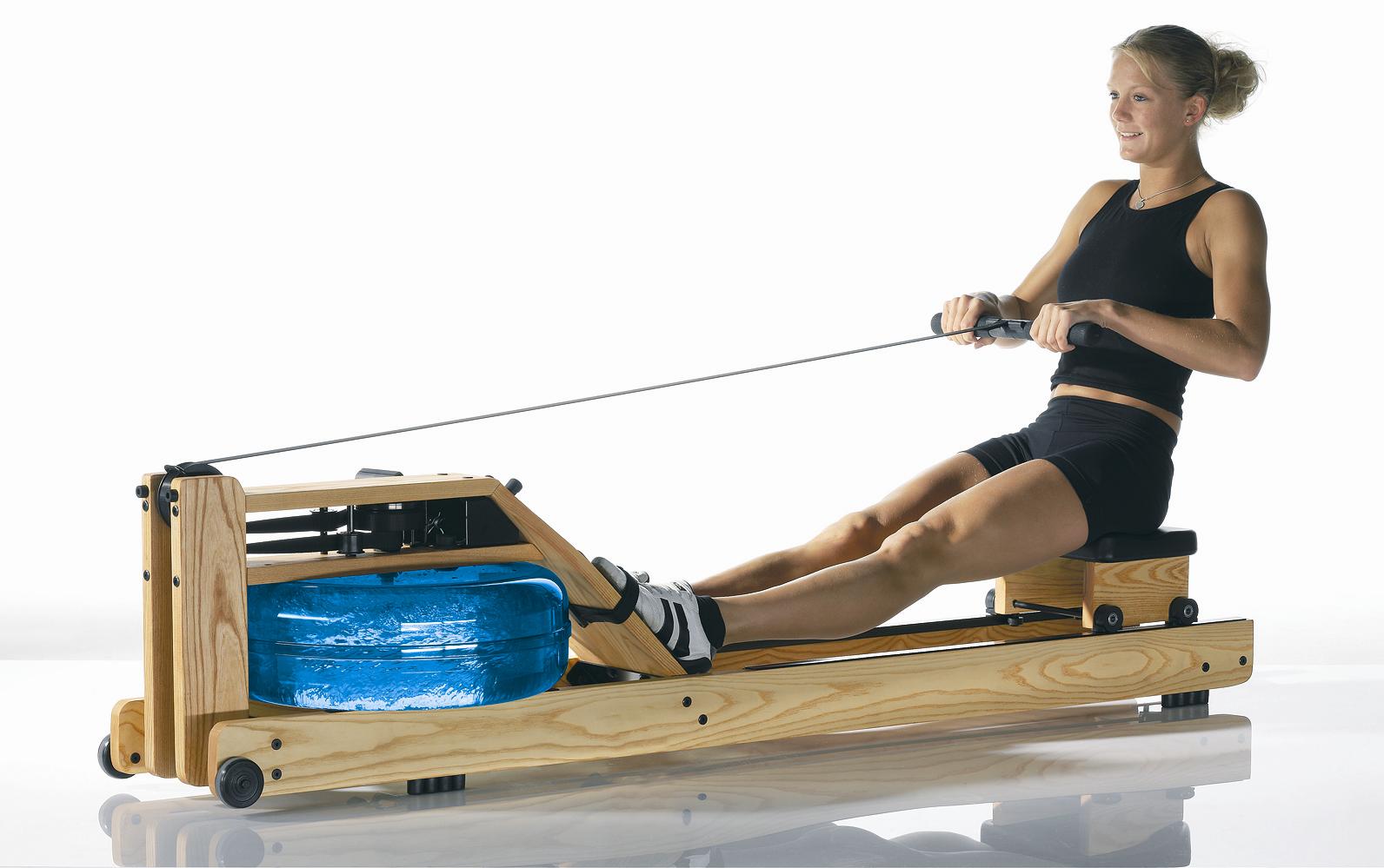
The water rowing machines are exceptional in producing a strong, quiet resistance. They have a large tank at the front with a seat rail. The popular brand “WaterRower” makes a lot of people believe the rowers are made from wood. But there are different styles and models of rowing machines available today at affordable prices.
Resistance Operation
The resistance on water rowers is provided by water. This machine has paddles suspended in the tank of water at the front part of the machine. You will have to pull the handle attached to the “rowing strap” that spins the paddles inside the tank.
The water moves as the paddle spins, and this creates resistance. So you will need some level of force to paddle. As you move row faster, the paddle moves faster, creating more resistance.
In a word, “the faster you row, the more resistance produced and the more force you need to apply.”
This goes with the “Rule of Cubes,” which states that “the doubling of the boat’s speed will need an eight-fold increase in resistance.” This relationship between speed and resistance shows that the water rowing machine can help you experience an infinite amount of resistance levels.”
Little wonder the resistance on water rowers are termed “variable.”
The idea is simple Water rowers do not have any resistance settings. You just need to row faster to feel more resistance.
Adjustment of water level
The water rowers come with the ability to add or reduce water in the main tank. And the water level influences how the rowing stroke feels.
You can easily know where to fill the tank from the rowing machine manual, and this depends on your athletic abilities and your age.
You will be making a big mistake if you think adding more water will increase resistance. This statement is wrong. The resistance is related to speed. Yea, the faster the speed, the greater the drag/resistance and the harder you need to work.
The tank’s water level only indicates the weight of the boat and the person inside, so changing the water level will have no effect on the resistance, but changes the weight the user is trying to move.
Monitors
Water rowers come with not-so-good monitors. But advanced monitors depend on the price you pay for the rowing machine. However, even if you pay a high price for a water rower, you cannot get the best monitor like what you will get with the air rowers.
Series 4 (S4) is the best monitor you can get on a water rowing machine. And you can find it on the WaterRower brand machines. This monitor has many features like distance, watts, heart rate, 500m split, etc. You can also connect it to a PC to play games and race with many other users.
These features make the home water rower suitable for the average user. But this cannot be compared with the PM5, which is found in the air rowing machine.
If you are not competing in an indoor rowing game or trying to compare data to other rowing athletes, you can make it with the water rower.
Other unique features
Although resistance is the major difference between water rowers and air rowers, there are some features that are unique to water rowers. One of these main features is the noise level.
A lot of people love the quaint splashing noise from a water rower that is oddly “zen-like.” The noise is said to be meditative and soothing to the hearers. Besides, it is louder than that of a magnetic rower but quieter than an air rower.
So you can use the water rower and still watch television comfortably without any worries of disturbing people in an adjacent room.
If you look at the design of most of the popular rowers, you’ll find that they are aesthetically pleasing. They look more like living room furniture because they are hand-crafted from wood. That’s why a lot of people prefer to store their rowing machine in their living room.
The following are some unique features of the water rower machines:
- It uses a rowing strap and not a chain to reduce noise.
- The water tank acts as a ballast to give stability.
- The rowing machine becomes heavy and difficult to move when the water tank is full.
- The wood frames absorb vibration and sound and add to the build quality.
Air Rowers
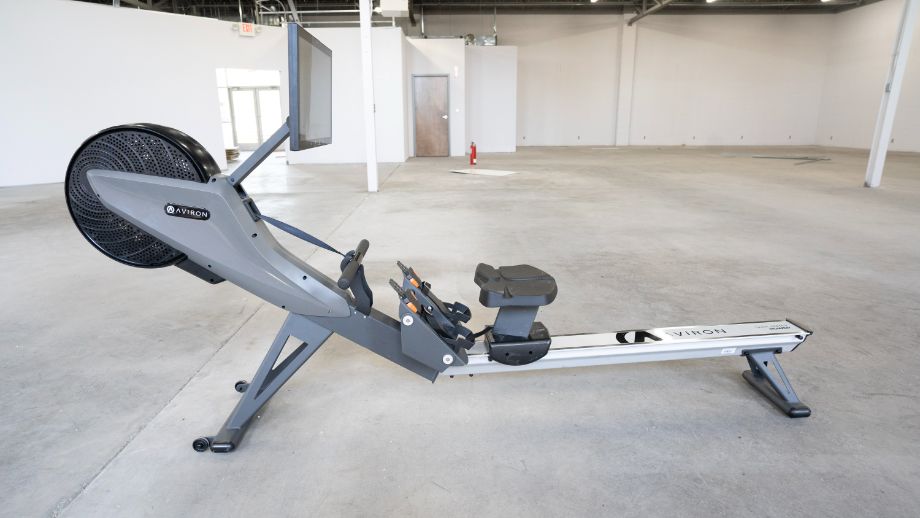
The air rowers are great at-home rowing machines because they offer strong rowing strokes and come in a variety of price ranges- from high to low and medium.
Just like the water rowers, these machines also mimic the resistance felt while rowing on water. However, the air rowers can record speed, power, and distance far more accurately than the water rowers.
The advanced monitors they carry makes them more popular in the fitness community. Besides, that’s the major reason why Olympic athletes prefer air rowers for building resistance.
Resistance operation
The air rowers build resistance through the action of air. They operate in a similar fashion to water rowers in that they both follow the laws of “fluid dynamics,” with the fluids being air and water.
The working principle involves a user pulling a handle attached to a fan flywheel. The user spins the flywheel as they perform a rowing stroke. This moves the air particles and causes resistance against the fan. So you need “force” to spin the flywheel.
This means that the faster you row, you more resistance you create. This also agrees with the “Rule of Cubes” described above. So there’s an exponential relationship between resistance and speed.
You can describe both the air rowers and water rowers as “variable” resistance machines. However, you can achieve different levels of resistance by rowing faster or slower.
Airflow control
You can control airflow to the flywheel of a rowing machine with a “damper.” The dampers have settings options that permit different amounts of air to interact with the flywheel. This can be likened to changing water levels in a water rower tank.
When you move the damper setting to 1, it allows only a small amount of air into the spinning machine. This means less inflow of air particles to interact with the flywheel. You will feel lighter rowing strokes in return.
But when you move the damper settings to 10, for example, it allows a large amount of air into the flywheel, thereby creates more interaction between air and the flywheel, and this causes “heavier” feeling strokes.
You can simply view the damper settings like a bicycle gearing. It impacts the rowing feels but not the resistance. So the lower damper settings can be likened to the easier gears on a bike.
Monitors
The monitors of the air rowers interest a lot of people, making them preferred over the water rowers. The monitors on high-end air rowers are highly accurate and advanced, and that on the budget air rowers are inaccurate and basic.
Presently, the best monitor on the market is the Concept2Model D PM5. It records variables like 500m split times, distance, watts, force curve, and pace boat. This monitor can calculate the deceleration of your flywheel with every stroke and determine the amount of work you’re performing.
Factors like dust build-up, humidity, and elevation do not affect the data recorded and displayed on the monitor.
More so, monitors like the PM5 are capable of comparing times and race against each other. That’s more reasons why world records, Olympic rowers, and indoor rowing competitions make use of air rowing machines (specifically Concept2).
Other Unique features
Some of the features that distinguish the air rowers from the water rowers include the following:
- The seat rail is foldable for easy storage.
- The plastic flywheel makes the machine fairly light.
- The fan is noisy while in use and you may need to turn up the volume of your TV while using the rowing machine.
Comparing the Water rower vs Air rower
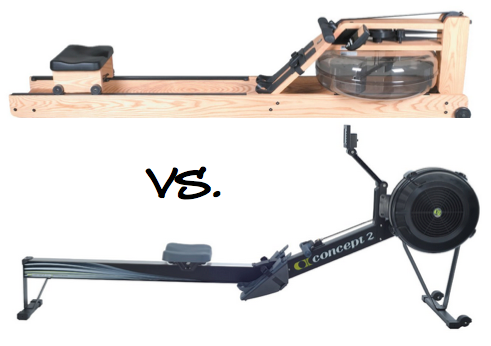
While describing these two major rowing machines, you would have noticed some key similarities and differences. However, below is a list of the main similarities and then the breakdown of some major differences between the two rowing machines.
Similarities between water rowers vs air rowers
- Both carry long frames that make the row machines suitable for tall people.
- They both produce variable resistance, making each excellent for high-intensity interval training (HIIT) workouts.
- Both function like the resistance felt while rowing on water.
- They both use the same rowing technique.
- Both of them work with the “handle” push mechanism attached via a chain or rowing strap.
- They both target the same muscle groups in the body.
- You can adjust the “feel” of the rowing strokes on both machines- change damper on air rower or add/subtract water.
Differences between water rower vs air rower
Monitor: Both rowing machines can have high and low-quality monitors depending on price, but the best monitors come with the air rowers. So if you want to track data, compare times and racing, then you can opt for the air monitors with an advanced monitor.
Price: Water rowers are quite more expensive than air rowers. You can get the lowest models of the water rowers for $700 and the best models cost at least $1,100. But the air rowers are available in all price ranges, starting from $200, you can find your best rowing machine under $300 or best rowing machine under $500 and going high up to $1,000+. The low price of the air rowers makes them a very popular option.
Stroke feel: It is hard to determine the “stroke feel” of each resistant type, and that’s because it depends on the models of air or water rowers you’re comparing. However, water rowers produce stronger “catch” that lightens as you approach the “finish,” while the air rowers produce lighter “catch” that increases as you move to the “finish.”
That being said, both machines produce a stroke feel, but advanced rowers can only notice them. So you will need to row a lot to be able to spot the difference.
Noise level: Water rowers produce a splashing noise in the tank, but is it a lot quieter and more soothing than the “whooshing noise” produced by air rowers. The air rower is bad for you if you like watching TV, living in apartments, like working out early in the morning or having sleeping children.
Water Rower vs Air Rower Making Your Choice
Now that you understand the key similarities and differences between water rowers and air rowers, you can make your choice based on the resistance type that fits your preferences.
If you intend to train, race, maximize your workout, compare data, and don’t mind the noise, you can opt for the air rowing machine. But if you prefer a quiet environment and enjoy the sound of water, you can choose the water rowing machine.

